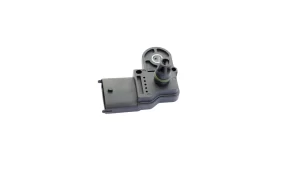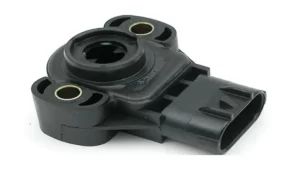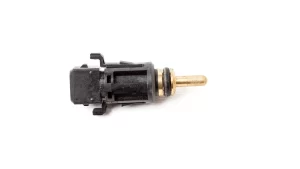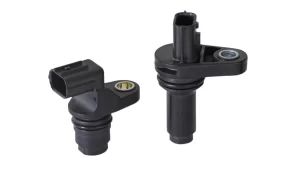- October 5, 2023
- By Atif Rashid
- In Blog
- 229
- 0

Introduction
Car engine sensors are the unsung heroes of modern automobiles. They silently monitor various parameters, ensuring your vehicle runs smoothly. In this detailed guide, we’ll delve into the world of car engine sensors. From understanding their functions to exploring the different types, you’ll gain insights into these critical components that keep your car running optimally.
Car Engine Sensors: The Heart of Your Vehicle
Car engine sensors play a pivotal role in maintaining your vehicle’s efficiency, emissions, and overall performance. Without them, modern cars wouldn’t be as fuel-efficient, environmentally friendly, or reliable as they are today. Let’s explore the essential aspects of car engine sensors in detail.
Types of Car Engine Sensors
Car engine sensors come in various types, each with a specific role in ensuring your vehicle operates at its best. Here are the key types you should know about:
Oxygen sensors, often referred to as O2 sensors, monitor the level of oxygen in the exhaust gases. They help optimize the air-fuel mixture, enhancing fuel efficiency and reducing emissions.
MAF sensors measure the amount of air entering the engine, allowing the engine control unit (ECU) to adjust the fuel injection for optimal combustion.
TPS sensors track the position of the throttle, ensuring the engine receives the right amount of air for different driving conditions.
These sensors monitor the engine’s temperature, assisting in controlling the cooling system and preventing overheating.
CKP sensors detect the position and speed of the crankshaft, helping with ignition timing and fuel injection synchronization.
CMP sensors monitor the camshaft’s position, aiding in precise fuel injection timing and valve control.
Knock sensors detect engine knocking or pinging, allowing the ECU to adjust the ignition timing to prevent engine damage.
Manifold Absolute Pressure (MAP) sensors measure the intake manifold’s pressure, assisting in optimizing engine performance and efficiency.
Anti-lock Braking System (ABS) sensors monitor wheel speed, helping the ABS system prevent wheel lockup during braking.
Speed sensors track the vehicle’s speed, providing critical data for functions like cruise control and transmission shifting.
Oil pressure sensors ensure the engine maintains proper oil pressure, safeguarding against damage due to insufficient lubrication.
These sensors indicate the fuel level in the tank, allowing the fuel gauge to display accurate readings.
How Car Engine Sensors Work
Car engine sensors work together in harmony to gather data and relay it to the ECU. The ECU then uses this information to make real-time adjustments, optimizing engine performance, emissions, and fuel economy.
Car Engine Sensors Explain in Detail
Oxygen Sensors: Fine-Tuning Fuel Mixture
Oxygen sensors are crucial for maintaining the right air-fuel ratio. They continuously monitor the exhaust gases’ oxygen levels and send feedback to the ECU. If the mixture is too rich (excess fuel), the ECU will adjust to use less fuel, improving efficiency and reducing emissions. Conversely, if the mixture is too lean, more fuel is added for combustion. This delicate balancing act ensures peak engine performance.

Mass Airflow Sensors: Measuring Inhaled Air
Mass airflow sensors determine the volume and density of incoming air. This data is vital for calculating the correct fuel injection quantity. Whether you’re idling or accelerating, these sensors ensure the engine gets the right amount of air, optimizing power output and efficiency.

Throttle Position Sensors: Responding to Acceleration
TPS sensors inform the ECU about the throttle’s position. When you accelerate, the throttle opens wider, allowing more air into the engine. TPS sensors play a crucial role in ensuring the engine receives the proper air-to-fuel ratio for seamless acceleration.

Coolant Temperature Sensors: Preventing Overheating
These sensors keep tabs on engine temperature. If the engine gets too hot, they alert the ECU to engage the cooling system. This prevents overheating, which can lead to engine damage.

Crankshaft Position Sensors: Timing is Everything
CKP sensors track the crankshaft’s position, providing data needed for ignition timing and fuel injection synchronization. This precise timing is crucial for smooth engine operation and optimal power delivery.
Camshaft Position Sensors: Fine-Tuning Valve Timing
CMP sensors monitor the camshaft’s position, enabling precise fuel injection timing and valve control. This results in smoother idling, better fuel efficiency, and reduced emissions.

Conclusion
Car engine sensors are the unsung heroes that ensure your vehicle runs efficiently and responsibly. From monitoring oxygen levels to fine-tuning fuel injection, these sensors play a vital role in modern automotive technology. Understanding how they work and their significance empowers you to make informed decisions about your vehicle’s maintenance and performance.
Follow Us





